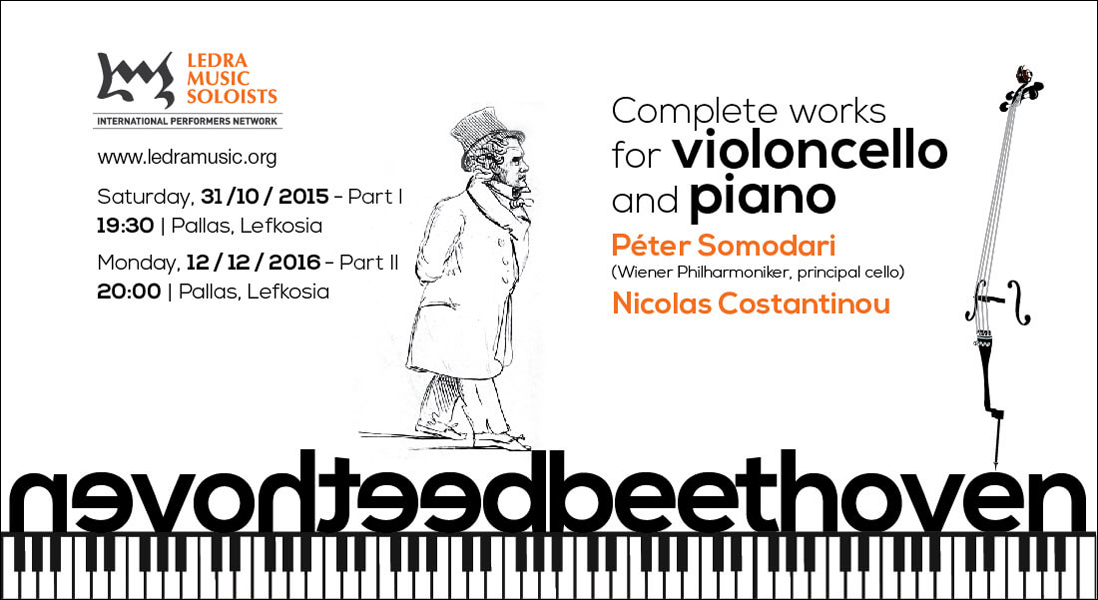LUDWIG VAN BEETHOVEN:
COMPLETE WORKS FOR VIOLONCELLO AND PIANO
Saturday, 31 / 10 / 2015 – Part I
19:30, Pallas Cinema-theatre, Lefkosia
Saturday, 19 / 11 / 2016 – Part II
19:30, Pallas Cinema-theatre, Lefkosia
> Péter Somodari | violoncello |
> Nicolas Costantinou | piano |
PROGRAMME
Part I
7 Variations on ‘Bei Männern, welche Liebe fühlen’ from W. A. Mozart’s The Magic Flute, WoO 46
Sonata for piano and cello No. 1 in F major, op. 5, 1
12 Variations on “see the conqu’ring here comes” from Handel’s Judus Maccabeus, WoO 45
Sonata for piano and cello No. 2 in G minor, op. 5, 2
Part II
12 Variations on “Ein Mädchen oder Weibchen” from W. A. Mozart’s The Magic Flute, op. 66
Sonata for piano and cello No. 3 in A major, op. 69
Sonata for piano and cello No. 4 in C major, op. 102, 1
Sonata for piano and cello No. 5 in D major, op. 102, 2
The composition of sonatas for piano and cello was unthinkable before Beethoven; up until then, the cello would mainly provide the bass line. Moreover, this particular combination posed various difficulties as the piano would often outweigh the low notes of the cello and balance between the two instruments is always precarious. Beethoven was the first composer to tackle these challenges (his example was not followed until 1824). The works for piano and cello (three sets variations and five sonatas) are representative of the three periods of Beethoven’s artistic creation: the ‘classical’ (WoO 45, 46, opp. 5, 66), the ‘heroic’ (op. 69) and the ‘late’ (op. 102). Inspired by the unmatched capabilities of various renowned cellists and his own abilities as a virtuoso pianist, the sonatas not only represented an example par excellence for the subsequent generation of composers, but at the same time, they pose tremendous challenges for cellists and pianists alike.
Pallas: 22410181 | LMS: 22352355 | info@ledramusic.org | www.ledramusic.org
Sponsors:

